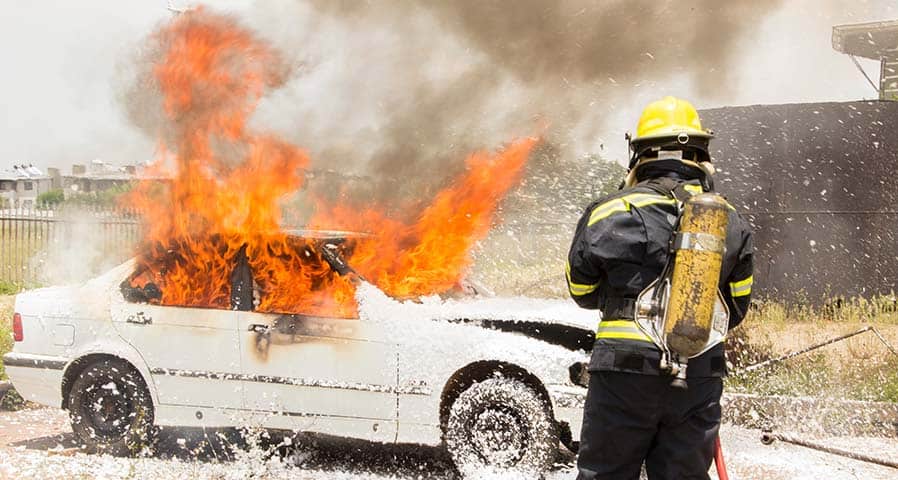In September, Hurricane Ian tore through the south leaving wreckage in its path. Many homes and properties were ruined due to high winds and flood damage. Flood damage has affected electric vehicles in an unexpected way. Electric vehicles that came in contact with high amounts of saltwater have been igniting on fire without any warning. This has been seen in areas that got hit the worst by the category 4 hurricane. Now that electric vehicles are gaining more popularity, fire marshals are seeing this reoccurring theme more than they have in previous storms.
It’s been a great challenge for firefighters to diminish the fire in the electric vehicles. When EVs come in contact with saltwater, they may not ignite right away. They could still be hazardous for a few weeks after the storms and high flooding. It also takes an immense amount of water to put the fires out. It can take an upwards of 12,000 gallons of water to put out the fire, 10 times more than a gas-powered vehicle would require. After the firefighters put out the fire in the vehicles, they could still light back on fire without warning. Experts still are unsure what could initially spark the vehicle to catch fire in the first place.
If you know that your area is going to be flooded, be sure to move your electric vehicle out of the flood zone as much as you can, especially if you are in a salt-water area.
“As [EVs] grow in popularity, this is a potential threat that we’re going to have to deal with,” said Florida state fire marshal Jimmy Patronis, “I want to create solutions that work, other than just providing water to try to control the temperature of a battery that is burning out of control.”
Click here to read the full article. Originally published October 20, 2022, by ABC News.








0 Comments